SARS-CoV-2-specific immune responses and clinical outcomes after COVID-19 vaccination in patients with immune-suppressive disease
- PMID: 37414897
- PMCID: PMC10353927
- DOI: 10.1038/s41591-023-02414-4
SARS-CoV-2-specific immune responses and clinical outcomes after COVID-19 vaccination in patients with immune-suppressive disease
Abstract
Severe acute respiratory syndrome coronavirus 2 (SARS-CoV-2) immune responses and infection outcomes were evaluated in 2,686 patients with varying immune-suppressive disease states after administration of two Coronavirus Disease 2019 (COVID-19) vaccines. Overall, 255 of 2,204 (12%) patients failed to develop anti-spike antibodies, with an additional 600 of 2,204 (27%) patients generating low levels (<380 AU ml-1). Vaccine failure rates were highest in ANCA-associated vasculitis on rituximab (21/29, 72%), hemodialysis on immunosuppressive therapy (6/30, 20%) and solid organ transplant recipients (20/81, 25% and 141/458, 31%). SARS-CoV-2-specific T cell responses were detected in 513 of 580 (88%) patients, with lower T cell magnitude or proportion in hemodialysis, allogeneic hematopoietic stem cell transplantation and liver transplant recipients (versus healthy controls). Humoral responses against Omicron (BA.1) were reduced, although cross-reactive T cell responses were sustained in all participants for whom these data were available. BNT162b2 was associated with higher antibody but lower cellular responses compared to ChAdOx1 nCoV-19 vaccination. We report 474 SARS-CoV-2 infection episodes, including 48 individuals with hospitalization or death from COVID-19. Decreased magnitude of both the serological and the T cell response was associated with severe COVID-19. Overall, we identified clinical phenotypes that may benefit from targeted COVID-19 therapeutic strategies.
© 2023. The Author(s).
Conflict of interest statement
E.B. consults for AstaZeneca, Roche and Vaccitech and has patents in ChAdox1 HBV and HCV vaccines. I.B.M. receives consulting fees and honoraria from AbbVie, AstraZeneca, Bristol Myers Squibb, Boehringer Ingelheim, Cabaletta, Causeway Therapeutics, Celgene, Evelo, Gilead, Janssen, Pfizer, Novartis, Eli Lilly, Moonlake and UCB Pharma and research support from Bristol Myers Squibb, Boehringer Ingelheim, Celgene, Janssen, Novartis and UCB Pharma. C.S.G. has received research grants from AstraZeneca but unrelated to any of the work described in this manuscript. Furthermore, the funder had no specific role in the conceptualization, design, data collection, analysis, decision to publish or preparation of the manuscript. P. Klenerman was part of an advisory board for AstraZeneca for work unrelated to vaccines. L.L. acted as a paid advisor to Pfizer and AstraZeneca for work unrelated to vaccines and was on an advisory board for AstraZeneca for pre-exposure prophylaxis. L.L. is a Trustee of Kidney Research UK and is associated with the UK Kidney Association. The authors declare no other relevant conflicts of interest. The OCTAVE study group comprises investigators, sub-investigators and clinical trial staff. The PITCH consortium comprises investigators and sub-investigators in the UK Department of Health and Social Care-funded study.
Figures

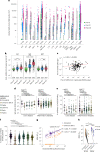
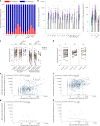
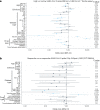
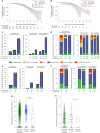
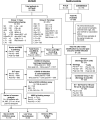
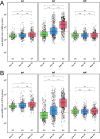



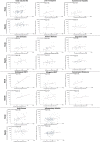


Similar articles
-
Evaluation of Humoral Immune Response after SARS-CoV-2 Vaccination Using Two Binding Antibody Assays and a Neutralizing Antibody Assay.Microbiol Spectr. 2021 Dec 22;9(3):e0120221. doi: 10.1128/Spectrum.01202-21. Epub 2021 Nov 24. Microbiol Spectr. 2021. PMID: 34817223 Free PMC article.
-
Profile of humoral and cellular immune responses to single doses of BNT162b2 or ChAdOx1 nCoV-19 vaccines in residents and staff within residential care homes (VIVALDI): an observational study.Lancet Healthy Longev. 2021 Sep;2(9):e544-e553. doi: 10.1016/S2666-7568(21)00168-9. Epub 2021 Aug 19. Lancet Healthy Longev. 2021. PMID: 34430954 Free PMC article.
-
Immunogenicity of single vaccination with BNT162b2 or ChAdOx1 nCoV-19 at 5-6 weeks post vaccine in participants aged 80 years or older: an exploratory analysis.Lancet Healthy Longev. 2021 Sep;2(9):e554-e560. doi: 10.1016/S2666-7568(21)00169-0. Epub 2021 Aug 12. Lancet Healthy Longev. 2021. PMID: 34401865 Free PMC article.
-
Interdependencies of cellular and humoral immune responses in heterologous and homologous SARS-CoV-2 vaccination.Allergy. 2022 Aug;77(8):2381-2392. doi: 10.1111/all.15247. Epub 2022 Feb 16. Allergy. 2022. PMID: 35124800 Free PMC article.
-
MOG encephalomyelitis after vaccination against severe acute respiratory syndrome coronavirus type 2 (SARS-CoV-2): case report and comprehensive review of the literature.J Neurol. 2022 Oct;269(10):5198-5212. doi: 10.1007/s00415-022-11194-9. Epub 2022 Jun 23. J Neurol. 2022. PMID: 35737110 Free PMC article. Review.
Cited by
-
Real-World Assessment of Recommended COVID-19 Vaccination Waiting Period after Chemotherapy.Vaccines (Basel). 2024 Jun 18;12(6):678. doi: 10.3390/vaccines12060678. Vaccines (Basel). 2024. PMID: 38932407 Free PMC article.
-
SARS-CoV-2 shedding and evolution in immunocompromised hosts during the Omicron period: a multicenter prospective analysis.medRxiv [Preprint]. 2023 Aug 24:2023.08.22.23294416. doi: 10.1101/2023.08.22.23294416. medRxiv. 2023. Update in: Lancet Microbe. 2024 Mar;5(3):e235-e246. doi: 10.1016/S2666-5247(23)00336-1. PMID: 37662226 Free PMC article. Updated. Preprint.
-
Clinical and immunological outcomes of SARS-CoV-2-infected vaccine responders, vaccine non-responders, and unvaccinated patients evaluated for neutralizing monoclonal antibody treatment at a single German tertiary care center: a retrospective cohort study with prospective follow-up.Infection. 2024 Jun;52(3):1143-1151. doi: 10.1007/s15010-023-02171-z. Epub 2024 Feb 2. Infection. 2024. PMID: 38305828 Free PMC article.
-
Cancer type and gene signatures associated with breakthrough infections following COVID-19 mRNA vaccination.NPJ Vaccines. 2025 May 9;10(1):90. doi: 10.1038/s41541-025-01141-w. NPJ Vaccines. 2025. PMID: 40341527 Free PMC article.
-
Posaconazole for Prevention of COVID-19-Associated Pulmonary Aspergillosis in Mechanically Ventilated Patients: A European Multicentre Case-Control Study (POSACOVID).Mycoses. 2025 Jan;68(1):e70023. doi: 10.1111/myc.70023. Mycoses. 2025. PMID: 39800852 Free PMC article.
References
-
- Office for National Statistics. People with long-term health conditions, UK: January to December 2019. https://www.ons.gov.uk/peoplepopulationandcommunity/healthandsocialcare/... (2020).
Publication types
MeSH terms
Substances
Grants and funding
LinkOut - more resources
Full Text Sources
Medical
Miscellaneous

